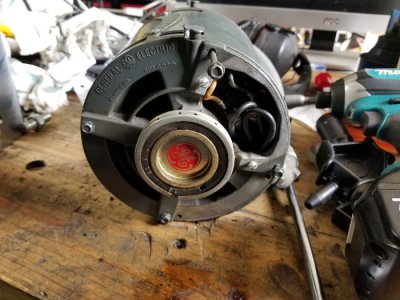Admittedly a wild theory: It might be that there's some kind of high resistance "short" to the rotor somewhere inside the motor. Belts, though they are rubber, are loaded with carbon, and may well be slightly conductive. Installing the belt would allow the leakage to get to the frame of the machine. Removing the belt gives the leakage nowhere to go. This assumes that your motor is mounted with rubber isolators at each end, and is not otherwise grounded. If the motor frame is hard mounted to the machine it will provide a leakage path to ground, and my scenario would be invalid.
I suppose you could test this theory by removing the belt, turning on the motor, connecting test lead to the machine's frame, and briefly touching it to the motor shaft. If this pops the GFCI, look for an internal current leak to the rotor.


